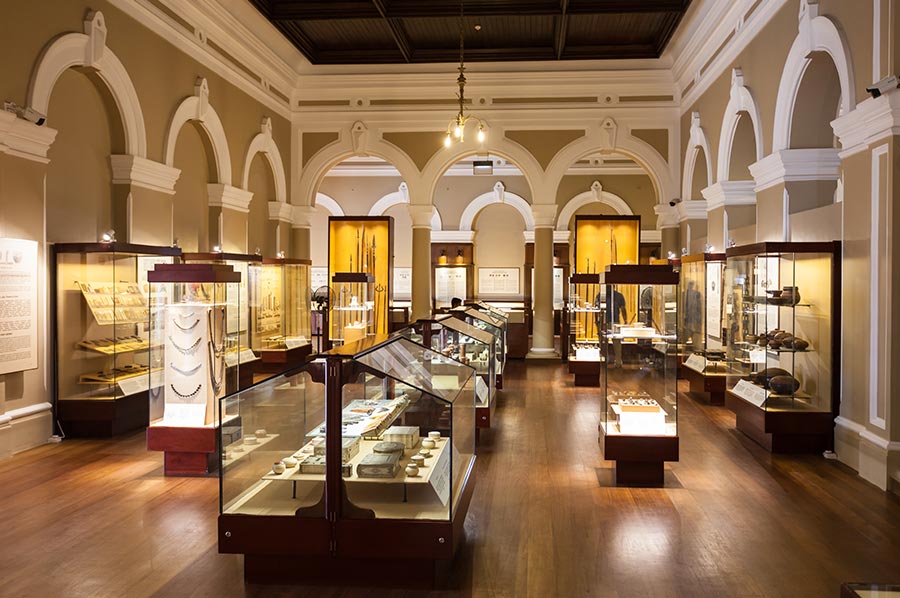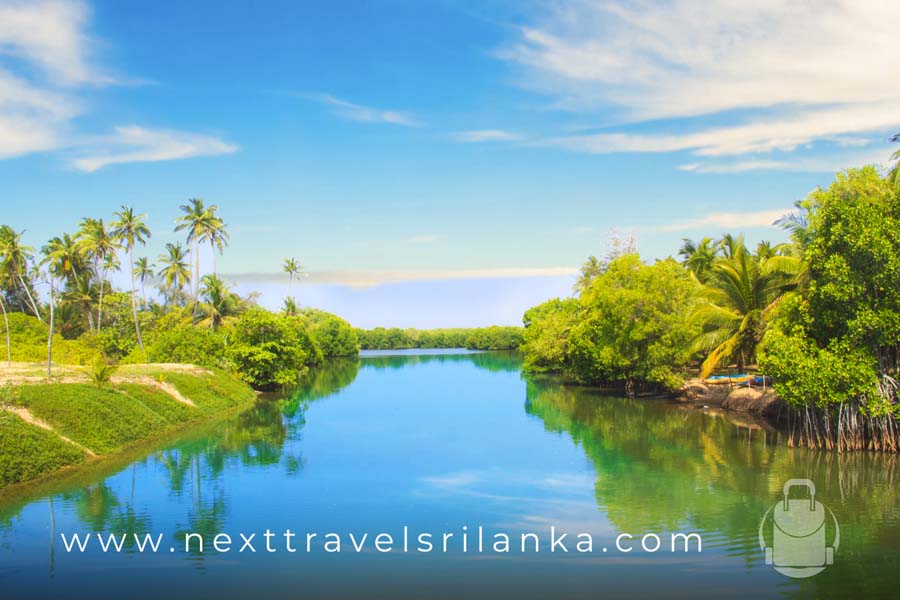
Excited to explore the treasures from Sri Lanka’s past? If so, visiting the Colombo National Museums, which is also famous as the Sri Lanka National Museum is simply a must.
A walk in this splendid National Museum is similar to a walk through the astonishing Sri Lankan history. To that extent, the Colombo National Museum carries plenty of precious memories and proud moments that happened in the eventful history of Sri Lanka. The collection of artifacts the Colombo National Museum houses proves that Sri Lanka had a great and vibrant heritage. Hence, it provokes both the local and international populace to visit and admire the historical beauty of the island. Hence, we thought of enlightening you about this marvelous attraction. Continue reading for a better overview!
History of the Colombo National Museum
From its establishment on the 1st of January in 1877 until the present, the Colombo National Museum remains significant. Besides, this place that takes you to the history of the island also has a great history. Hence we thought of drawing your attention to the past of this significant attraction. The following sections will enlighten you with regard.
Who Founded the Colombo National Museum?
The Colombo National Museum has been popular as the Colombo Museum since its first establishment. Sir William Henry Gregory was the founder of the Colombo Museum in 1877. He was the former British governor for Ceylon, appointed in 1872. During his appointment, The Royal Asiatic Society has stressed the need to establish a public museum in Sri Lanka. As a result, with the permission of the legislative council, Sir Gregory was able to successfully establish the Colombo Museum. It was with reference to the great structural plans of Sir James George Smither, an architect of the Public Works Department. He added the Italian Architectural style to the structural planning of the museum, which added uniqueness to it.
Besides, Wapchie Marikar was the one who built the museum according to plan. However, they completed the construction in 1876 and the Museum began to function in 1877. However, after the completion of the building, in the grand opening ceremony of the Colombo Museum, Sir Gregory has agreed to close the Museum on Fridays while considering it as a dedication to the Marikar. That was because Friday is a day for Muslim Sabbath. Sir Gregory had to consider the request of Marikar. However, with the passing time, this tradition changed, and now the museum is not closed on Fridays as in the past.
Colombo Museums Gaining the National Status
When considering the historical development of the Colombo Museum, P. E.P Deraniyagala cannot be ignored. He is the person who took the lead in giving the national status to this museum. Accordingly, this large museum complex got the name Colombo National Museum in 1940.
Apart from that, E.P Deraniyagala took the first step to open the branches of the museum islandwide. The main focus was on the areas that held a cultural significance. In fact, his focused areas were Kandy, Rathnapura, and Jaffna. He also established the department of the national museum under Act no 31. However, the developments continued under the appointments of directors to the National Museum. All of them contributed to the development of the museum in many ways during their administration period.
Significance of the Colombo National Museum
The Colombo National Museum is a two-storied Italian-style building and has well-maintained beautiful scenery with a lush green lawn. Further, it is the largest public museum in Sri Lanka. Besides, it is a complete package of wonders. Therefore, anyone who visits the place will receive a greater knowledge and witness the magical nature of Sri Lankan history to the utmost level. The following sections will further highlight to you the significance of this museum.
What to See in the Colombo National Museum?
At the entrance, the visitors can find the laughing Buddha statue which is very soothing at a glance. Stepping to the main hall, the visitors can witness the unique collections of artifacts, carvings, statues, thrones, guns, swords, and antique demon masks representing the colonial era and beyond.
Among those, in room number 5, is the astonishing throne of the Sinhalese King Wimaladharmasuriya. And then, you can observe the two giant bronze feet – 9th century Bodhisattva Sandals in room number 2. Indeed, they are some of the significant highlights that give you a feeling of the proud history of Sri Lanka.
Moreover, visitors can find the amazing mixture of art with English paintings in the galleries. Mainly, the upstairs galleries are dedicated to Sri Lankan arts and crafts. They indeed showcase the richness of the culture in Sri Lanka. To complete the necessities of giving the experience of the culture, there is also the National History Museum which contains a magnifying collection of animals and skeletons.
Other Facilities at the Museum
As an entertainment factor, not only the historical monuments, the museum also has a cafe with mesmerizing Sri Lankan food under the shady Banyan trees. Since Sri Lanka culture is not complete with Sri Lankan food, the National Museum takes this factor into consideration and provides the best experience for its visitors. Not only the cafe but also there is the Laksala Gift Shop that provides the visitors with attractive gift items for their loved ones.
So, owing to all these factors, the Colombo National Museum is highly significant in the line of ancient attractions worldwide. It is certainly a great treasure for Sri Lanka.
How to Reach the Colombo National Museum?
The museum is in the center of Colombo city. Foreigners who plan to visit the Museum can first get to the Colombo Fort bus station and take the 154 bus to get down at the Museum stop. The cost of traveling in a bus would be cheaper than when taking private transportation modes. Still, if you opt to, you can always use a taxi service, or go ahead hiring a cab or a tuk-tuk online.
Tips to Know Before Visiting the Colombo National Museum
It is always better to have background knowledge of a place before visiting that place, in order to avoid the discomforts firsthand. Hence, we have lined up a few important things about visiting the Colombo National Museum, which we think would be beneficial for you. Continue reading, to know what they are!
Choosing the Transportation Method
On the day of visiting, one should have to decide the transportation method he is using and the route that he is taking. Since there are lots of roads and plenty of traffic jams, it is suitable to think about these things beforehand. Your travel guides and the local community will surely help you with these plans.
Entrance Tickets at the Museum
Note that everyone who visits the Museum should buy tickets at the entrance. Ticket prices are varied for locals and foreigners and all the prices are in Sri Lankan rupees.
When considering the local people who only visit the Colombo National Museum, the ticket would approximately cost SLR 30 for a child and SLR 60 for an adult. For foreigners, it is approximately SLR 500 for a child and SLR 1000 for an adult.
However, if you are visiting both the Colombo National Museum and the National Museum of Natural History on the same premises, a ticket for a local child would approximately cost SLR 50 and SLR 100 for an adult. For foreigners, it would be SLR 600 for a child and SLR 1200 for an adult.
Please note that these prices can be varied under any circumstances in the future. Therefore when you visit, have an extra amount of money to avoid confusion.
Time Needed to Explore the Museum
The area of the Museum premises is very large. Therefore, it will take around 3-4 hours to complete witnessing inside the museum. Early preparation and keeping the excitement is a must when visiting the museum. Moreover, the museum contains lots of explanations and descriptions related to the arts and crafts. Those are the historical stories. When visiting the museum, one has to take time and read those stories. That is indeed the best way to receive the gist of Sri Lankan history.
Parking at the Museum
The parking of one’s own vehicle is very difficult in the parking lot under the museum premises, especially on busy days. Therefore, taking a taxi is the easiest way as the parking lot is also full sometimes.
The Atmosphere at the Museum
The Colombo area has an average hot climate. However, it is not air-conditioned inside the museum. But there are cooling fans everywhere in the building to maintain the heat. So, you don’t feel any discomfort and it has the perfect ventilation space to accommodate visitors inside the halls. Besides, the peaceful and calm atmosphere inside these halls creates the perfect opportunity to explore the treasures in the museum at their best!
Lavatory Facilities at the Premises
Note that there are no washrooms inside the museum building. Therefore the visitors can get prepared themselves before visiting the place to enjoy the greater diversity inside the museum.
And most importantly, the visitors should protect and respect the exhibits and prevent them from touching the surfaces of the exhibits.
Opening Hours of the Colombo National Museum
In history, the National Museum was closed on Fridays because of the Muslim Sabbath. But now, that policy has changed and the museum is open every day from 9.00 AM to 5.00 PM. Therefore, on both weekdays and weekends, the museum is open to visitors. But note that the museum is closed on public and national holidays in Sri Lanka.
The Most Suitable Time to Visit the National Museum in Colombo
Since Sri Lanka is a tropical country, it does not have any seasonal changes like in foreign countries. But the island has monsoon climates from time to time in the passing of the year. So, considering the climate change throughout the year, from February to August is the dry season and from August to January is the wet season. Therefore, the best time period to visit the museum and explore the surrounding beauty is in the dry season. That is from the end of January to March. There are up to 23 degrees Celsius to 28 degrees Celsius temperatures during the dry season which enables the visitors to explore the unexplored without any discomfort and difficulties.
However, apart from the public holidays, people can visit the place and witness the magic any time of the year. Since the Colombo area has a heating climate compared to other areas in Sri Lanka, it is better to wear light and comfortable clothes to avoid sweat and body heat.
The Bottom Line
The establishment and development of the Colombo National Museum are very significant in the history of Sri Lanka. It is a treasure for both local and international citizens to visit and learn the proud history of the island and the previous incidents that happened in the eras under the colonial period. Besides, visiting the Museum is an added advantage for children, youth, and adults in the present day because the modern man should know the number of sacrifices the ancient man has done to build and rebuild Sri Lanka by shredding their valuable blood and sweat. This is the best place in Sri Lanka for all the readers to visit and be proud of Sri Lanka’s emancipating history. So, never miss it when exploring the city of Colombo. Happy and Safe Travelling!

